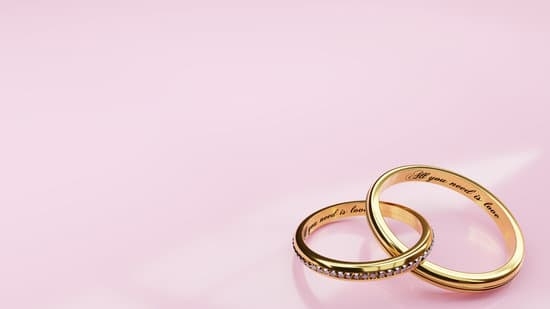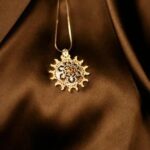Peruvian jewelry has gained popularity in the global market for its unique and distinctive designs. Every piece of handmade Peruvian jewelry reflects the rich history, cultural significance, and artistic expression of the indigenous people. The use of traditional materials and techniques adds to the allure of these exquisite pieces.
The history of Peruvian jewelry dates back centuries and is deeply rooted in the culture and traditions of the Andean people. Each piece tells a story, symbolizing ancestral rites, religious beliefs, and social status. The craftsmanship involved in creating these jewels is a reflection of Peru’s vibrant heritage and artistic ingenuity.
From intricate silverwork to colorful gemstones such as turquoise, opal, and spondylus shells, Peruvian artisans incorporate a variety of materials into their creations. The techniques used in making Peruvian jewelry are passed down through generations, highlighting the skills and expertise that contribute to the craftsmanship of each piece. The result is stunning jewelry with captivating designs that stand out in today’s fashion trends.
History and Cultural Significance of Peruvian Jewelry
Peruvian jewelry dates back to pre-Columbian times when the Inca civilization dominated the Andean region. Jewelry held significant cultural and symbolic importance for the ancient Peruvians, serving as symbols of power, status, and spirituality. Gold and silver were considered sacred metals, and were intricately crafted into ornate jewelry pieces for use in ceremonies, rituals, and daily adornment.
The history of Peruvian jewelry is deeply intertwined with the country’s rich cultural heritage. The meticulous craftsmanship and attention to detail exhibited in handmade Peruvian jewelry reflect the artisan’s reverence for their ancestors and their traditions. Each piece tells a story of Peru’s diverse indigenous cultures, blending elements from the Inca Empire with Spanish colonial influences.
Materials used in traditional Peruvian jewelry making include precious metals such as gold and silver, as well as semiprecious stones like turquoise, lapis lazuli, and opal. The techniques employed are often handed down from one generation to the next, showcasing the skilled artistry that has been passed down through centuries. Knotting known as “nudos” is also a distinctive technique used in crafting woven bracelets called “pulseras” using brightly colored fibers.
Overall, the history and cultural significance of Peruvian jewelry provide a unique insight into the country’s ancient traditions and values. The fusion of indigenous folklore with colonial influences has given rise to an exquisite array of styles that continue to captivate audiences worldwide. Whether it’s a pair of chandelier earrings or an intricately beaded necklace, handmade Peruvian jewelry carries with it a legacy of craftsmanship and cultural resonance that transcends time.
Materials and Techniques Used in Making Peruvian Jewelry
Peruvian jewelry is known for its unique and exquisite designs, as well as the materials and techniques used in the crafting process. The creation of handmade Peruvian jewelry involves a careful selection of materials and skilled artisanal techniques that have been passed down through generations.
Materials
One of the key components of Peruvian jewelry is silver, which has been used for centuries to create stunning pieces. In addition to silver, Andean artisans also incorporate natural gemstones such as turquoise, opal, and quartz into their designs. These gemstones are often sourced locally and are prized for their vibrant colors and unique characteristics. Another material widely used in Peruvian jewelry is gold, particularly in traditional Andean designs that reflect the cultural heritage of the region.
Techniques
The crafting of handmade Peruvian jewelry involves intricate techniques that require skill and precision. One notable technique is filigree, which involves twisting fine threads of metal to create delicate patterns and designs. This technique has been practiced in Peru for centuries and is highly regarded for its intricacy and beauty. Additionally, Peruvian artisans are known for their use of ancient Incan techniques such as lost-wax casting, which allows for the creation of detailed three-dimensional pieces.
Integration of Indigenous Artistry
Furthermore, many Peruvian jewelry pieces incorporate elements of indigenous artistry, such as weaving and textile work. This integration adds a distinctive cultural flair to the jewelry, showcasing the rich history and traditions of the Andean people. The blend of these traditional techniques with modern designs has resulted in a truly diverse range of handmade Peruvian jewelry that appeals to an international audience.
Overall, the materials and techniques used in making Peruvian jewelry contribute to its allure and cultural significance, making each piece a testament to the craftsmanship and artistry of Andean artisans.
The Unique and Distinctive Designs of Handmade Peruvian Jewelry
When it comes to handmade Peruvian jewelry, one of the most notable aspects is the unique and distinctive designs that set it apart from other types of jewelry. Peruvian jewelry often features intricate patterns, vibrant colors, and a blend of traditional and modern elements that make each piece truly stand out. The designs are inspired by the rich cultural heritage of Peru, incorporating symbols, motifs, and techniques that have been passed down through generations.
The use of traditional Andean symbols such as the chakana (or Andean cross), the puma, and the condor are common in Peruvian jewelry designs. These symbols hold deep meaning in Peruvian culture and are often incorporated into handmade jewelry as a way to honor and celebrate indigenous traditions. Additionally, many pieces feature geometric patterns and bright, bold colors that reflect the vibrant spirit of the Andean region.
Peruvian artisans also draw inspiration from nature, incorporating elements such as flowers, animals, and landscapes into their designs. Each piece of handmade Peruvian jewelry tells a story through its design, capturing the essence of Peru’s diverse cultural and natural landscape. Whether it’s a pair of earrings, a necklace, or a bracelet, each piece is a work of art that reflects the creativity and craftsmanship of its maker.
| Peruvian Jewelry Design Elements | Description |
|---|---|
| Traditional Symbols | Incorporated into designs to honor indigenous traditions. |
| Geometric Patterns | Reflecting the vibrant spirit of the Andean region. |
| Nature-Inspired Elements | Including flowers, animals, and landscapes to capture Peru’s cultural and natural essence. |
The Artisanal Process
The art of crafting handmade Peruvian jewelry is a tradition that has been passed down through generations, with artisans dedicating their time and skill to create unique and beautiful pieces. The artisanal process of making Peruvian jewelry is a labor-intensive and intricate process that requires precision and care every step of the way. From the initial concept to the completion of the piece, each stage involves careful attention to detail and a deep understanding of the traditional techniques involved.
The artisanal process of creating handmade Peruvian jewelry typically begins with the selection of high-quality materials such as silver, gold, semiprecious stones, and natural elements like seeds or shells. These materials are then meticulously crafted using traditional techniques such as filigree, metal hammering, and intricate weaving to bring the design to life. The craftsmanship involved in creating each piece results in a level of uniqueness and individuality that sets handmade Peruvian jewelry apart.
To give you a better idea of what this process entails, here are some key steps involved in creating handmade Peruvian jewelry:
- Design Concept: Artisans start with an initial concept or inspiration for their design.
- Material Selection: High-quality materials such as silver, gold, semiprecious stones, or natural elements are carefully chosen.
- Crafting Process: Traditional techniques such as filigree, metal hammering, and weaving are used to craft the jewelry.
- Finishing Touches: The piece is carefully polished and finished to perfection before it is ready for sale or wear.
This artisanal process not only highlights the dedication and skill of Peruvian artisans but also contributes to the unique appeal of handmade Peruvian jewelry.
Symbolism and Meaning Behind Peruvian Jewelry
Peruvian jewelry is not only known for its exquisite craftsmanship and intricate designs but also for the deep symbolism and meaningful representations behind each piece. The cultural significance of handmade Peruvian jewelry is rooted in the rich history and traditions of the indigenous people of Peru, as well as the incorporation of symbols from the Andean culture.
Andean Symbols
Many handmade Peruvian jewelry pieces are adorned with symbols that have significant meaning in Andean culture. For example, the chakana or Andean cross represents the three levels of existence: Hana Pacha (the upper world), Kay Pacha (the world of living), and Ucu Pacha (the underworld). Similarly, the quipu symbolizes accounting, recording, and communication in ancient Andean civilizations.
Natural Elements
The use of natural elements such as silver, gold, precious stones, and seashells in Peruvian jewelry reflects the connection to nature and the spiritual beliefs of the Andean people. Each material holds its own symbolism, with gold representing the sun and prosperity, silver representing the moon and feminine energy, and gemstones representing different deities or natural forces.
Protection and Blessings
In addition to cultural symbols and natural elements, handmade Peruvian jewelry often features motifs that are believed to offer protection or blessings to the wearer. Examples include depictions of animals like llamas or condors, which hold spiritual significance in Andean mythology, as well as geometric patterns that are thought to ward off negative energies or attract positive forces.
The symbolism and meaning behind Peruvian jewelry add depth and importance to each piece beyond its aesthetic value. Whether worn for ceremonial purposes or as a personal adornment, these symbolic elements make handmade Peruvian jewelry a cherished part of Andean heritage.
The Growing Popularity and Global Appeal of Peruvian Jewelry
Peruvian jewelry has been gaining widespread popularity and global appeal in recent years. The unique and distinctive designs, as well as the cultural significance behind each piece, have captured the interest of people around the world. From intricate beaded necklaces to colorful woven bracelets, handmade Peruvian jewelry is not only beautiful but also carries a rich history and tradition that adds to its allure.
One of the reasons for the growing popularity of Peruvian jewelry is its connection to the country’s indigenous roots. Many pieces are made using traditional Andean techniques that have been passed down through generations, making each item a work of art with deep cultural significance. In addition, the vibrant colors and intricate patterns found in Peruvian jewelry reflect the country’s diverse heritage, attracting admirers who appreciate its beauty and craftsmanship.
The rise of ethical consumerism has also contributed to the appeal of handmade Peruvian jewelry. As more people seek out sustainable and ethically-made products, they are drawn to items that support local artisans and communities.
Purchasing handmade Peruvian jewelry not only allows consumers to own a one-of-a-kind piece but also helps preserve traditional craftsmanship and supports the livelihoods of skilled artisans. This emphasis on ethical production resonates with consumers who prioritize authenticity and social responsibility in their purchases.
| Reasons for Popularity | Impact |
|---|---|
| Cultural significance and traditional techniques | Increases appreciation for indigenous craftsmanship |
| Ethical consumerism | Supports local artisans and communities |
Maintaining and Caring for Handmade Peruvian Jewelry
In conclusion, maintaining and caring for handmade Peruvian jewelry is essential in preserving its beauty and quality. The unique materials and intricate techniques used in the creation of Peruvian jewelry require special attention to ensure longevity and enduring charm. By following simple steps and taking necessary precautions, one can effectively care for their prized handmade Peruvian jewelry pieces.
Proper storage is crucial in preserving the condition of handmade Peruvian jewelry. It is advisable to store these pieces in a cool, dry place away from direct sunlight and moisture. Additionally, avoiding contact with harsh chemicals such as perfume or hairspray can prevent damage to the delicate materials. Regular cleaning with a soft cloth and gentle polishing will help maintain the luster of these exquisite creations.
The craftsmanship and artistry that goes into handcrafting each piece of Peruvian jewelry make them not only precious but timeless as well. By understanding the significance of proper maintenance, individuals can continue to enjoy the beauty and cultural significance of their cherished handmade Peruvian jewelry for generations to come.
Frequently Asked Questions
What Is Peruvian Jewelry Made Of?
Peruvian jewelry is made of various materials, including silver, gold, copper, and semi-precious stones like turquoise, opal, and chrysocolla. Artisans use traditional techniques to craft beautiful and unique jewelry pieces.
What Jewelry to Buy in Peru?
When visiting Peru, you’ll find a wide range of jewelry to buy, but some popular choices include silver earrings, necklaces with colorful gemstones, and beaded bracelets made by indigenous communities. These items often showcase the country’s rich cultural heritage.
Is Peruvian Silver Good Quality?
Peruvian silver is known for its good quality and craftsmanship. Many artisans use 950 silver, which has a higher purity than the standard 925 sterling silver. This results in durable and beautifully detailed jewelry pieces that are highly prized by collectors and buyers alike.

Welcome to my jewelry blog! My name is Sarah and I am the owner of this blog.
I love making jewelry and sharing my creations with others.
So whether you’re someone who loves wearing jewelry yourself or simply enjoys learning about it, be sure to check out my blog for insightful posts on everything related to this exciting topic!





